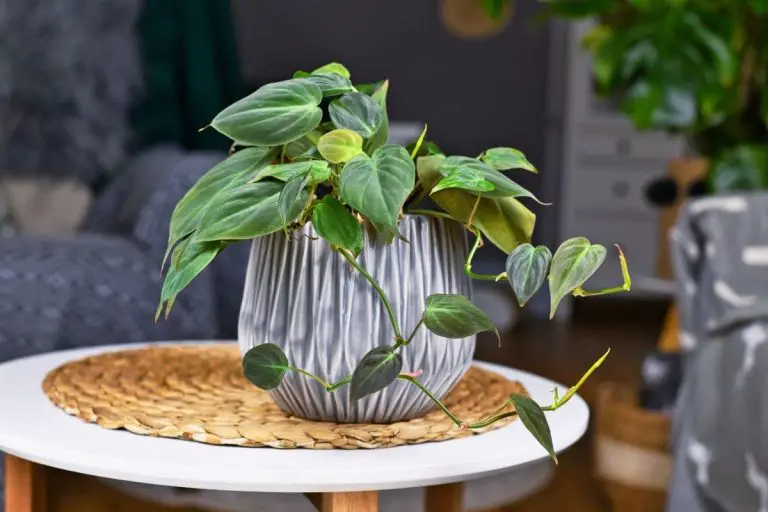Monstera Siltepecana- The Ultimate Guide for Healthy Growth
Are you thinking of having a stunning, easy to grow, and unique plant for your home? Why not give Monstera Siltepecana a try?
Monstera Siltepecana is a uniquely beautiful and flexible plant that can be quickly grown in various ways. The Siltepecana lives by climbing up support, in a hanging basket, or even in a terrarium which for sure is a perfect trait to grow in your lovely home.
To grow a beautiful and healthy Monstera Siltepecana, you need to understand the habits of Siltepecana plants, including their care and propagation.
What we’ll be covering in this Monstera Siltepecana ultimate guide for healthy growth:
- What is Monstera Siltepecana?
- The Monstera Siltepecana Growth Habit
- Where To buy Monstera Siltepecana?
- Monstera Siltepecana Plant Care
- Siltepecana Problem And Remedy
- Can You Make Monstera Variegated?
- How Do You Get Fenestration In Monstera?
- How To Make Monstera Siltepecana Grow Faster?
- How Long Does the Monstera Plant Live?
- Is Monstera Siltepecana Rare?
- Tips for Healthy Siltepecana Plant
DISCLAIMER
Some of the links on here are affiliate links and I may earn if you click on them, AT NO EXTRA cost to you. Hope you find the information here useful! Thanks.
Related Articles:
- All You Need to Know About Propagating Monstera
- Begonia Maculata Care: Best Essential Tips
- Philodendron Hastatum: The Beginners Care Guide
- Scindapsus Treubii Moonlight: A Plant Lovers Care Guide
What Is Monstera Siltepecana?
Monstera Siltepecana is an uncommon plant that belongs to the Monstera genus in the Araceae family, originating from Mexico and some parts of Central America.
Siltepecana is also commonly known as the Silver Monstera, due to its greyish-silver leaf in its juvenile stage of growth.
Furthermore, they are also known as the Swiss Cheese Plant because of the holes it develops at the leaf, which has a striking resemblance to swiss cheese when the Monstera Siltepecana is matured.
Because the Monsteras plant shares a lot of similarities to a Philodendron, Siltepecana is sometimes called the Philodendron Siltepecana or Silver Queen Philodendron.
The Monstera genus has at least 50 different types of flowering plants in the Arum of the Araceae family, including the Siltepecana species.
The majority of plants in this genus are herbs and evergreen vines and are popular amongst plant lovers as indoor house plants.
In summary, the Siltepecana plant can be categorized as follows:
Family: Araceae
Genus: Monstera
Species: Siltepecana
The Monstera Siltepecana Growth Habit
Monstera Siltepecana has a unique lifecycle, wherein in each growth phase, the plants produce different forms of plant features. Hence, making it look like two entirely different kinds of plants.
Siltepecana Leaves Shape and Appearance
During its juvenile phase, this plant produces lance-shaped leaves with a silver-grey hue and distinct dark green veins. The size of the leaves in this state can be anywhere between 3 to 4 inches long and 2 inches wide.
As the plant reaches its maturity phase, you will notice the leaves begin to grow bigger, whilst undergoing a color transformation into a dark green.
It then begins to form holes due to fenestration (A process where plants make holes naturally). Thus, exhibiting completely different features in contrast to its youth form.
The Siltepecana State of Growth
In nature, Siltepecana plants are epiphytic creepers. Monstera Siltepecana juvenile form is a happy terrestrial plant that usually grows at the base of a tree.
To complete their growth cycle, these plants will require some sort of support such as a large branch or moss pole for them to attach and grow since they’re epiphytic in nature.
With the support, the plants can quickly climb up and grow higher into a mature Monstera Siltepecana.
However, failing to provide support, will cause the plants to stay in it juvenile phase indefinitely until it has something to climb on to.
This is the reason why you will find most Siltepecana plants living in terrariums never enter a mature Monstera Siltepecana stage.
Where to Buy Monstera Siltepecana?
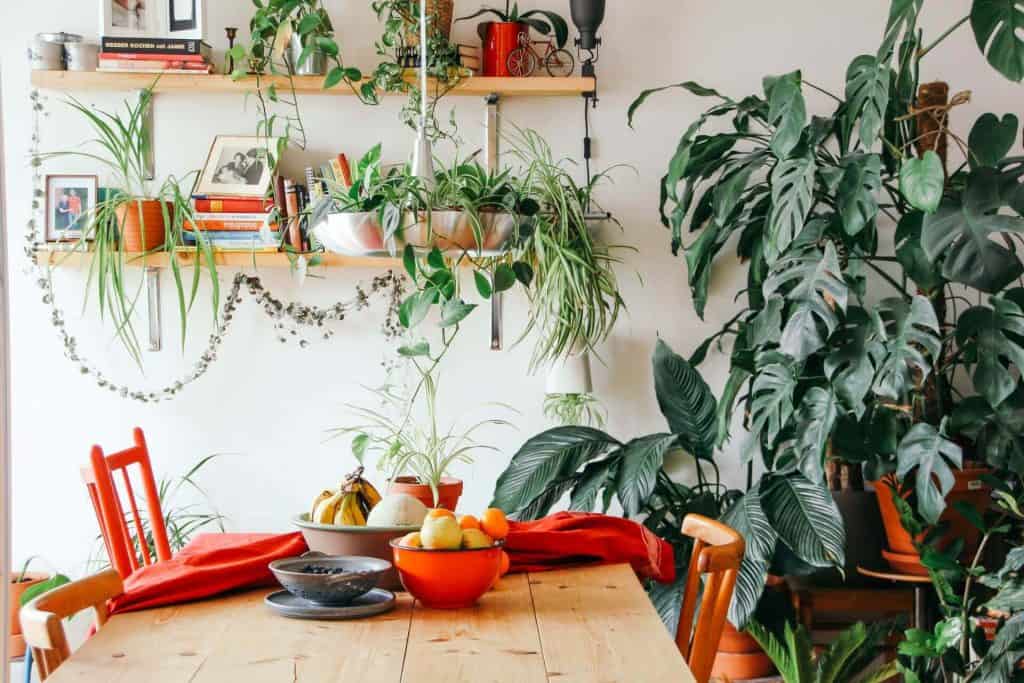
Consider yourself lucky to find these plants available in a regular offline plant shop. Yet, there are still many online plant shops or e-commerce sites on the net where you can find Monstera Siltepecana for sale.
Listed here are some of the sites where you can check it out:
- Etsy
- eBay
- Ben’s Jungle (For EU)
- Plant Circle (For EU)
- Kens Philodendron
- Josh’s Frogs
- Plant Goals
- Steve’s Leaves
- Private seller on Facebook or Instagram
The Monstera Siltepecana Plant Care
After purchasing your Monstera Siltepecana plant, the next thing to do is care for it!
As it is a low-maintenance tropical plant, the Siltepecana is very easy to grow and requires very little care.
But keep in mind though, there are still some aspects regarding Siltepecana care you need to take note of in order to grow a healthy Monstera Siltepecana.
Soil
General aroid mixes of perlite, pumice, and bark pieces are the best for these plants’ roots. This reason being the plant thrives best in a well-drained, moist to dry soil mix.
Adding some sphagnum moss to your Monstera Siltepecana soil mix concoction is also a great plus for your plants since they provide the root with sufficiently enough oxygen whilst maintaining the soil nice and humid.
Get the Miracle-Gro Sphagnum Peat Moss Now! Your Monstera Siltepecana will have strong root development and thanks to its unique water-holding capabilities it will require less watering.
Avoid using denser soil. Since the plants are epiphytic creepers, these plants are not suited to having their root covered entirely in dense soil, which also increases the chances of root rot.
Using dry and sandy soil mixes is also not a good choice for the Siltepecana plant as the water will drain too rapidly due to the soil not being able to hold in enough moisture.
It would also require frequent watering as the soil will dry out faster than you can water it. Hence, resulting in the browning of leaves.
Light
The best Monstera Siltepecana light is bright indirect sunlight. Just like the way it lives in its natural habitat, where they get indirect sunlight from the covered canopy of trees it grows in and under.
Having the plant exposed to direct sunlight in the morning, when the sunlight is not so intense, is also great for the plant as the soft morning light will help accelerate its growth.
Exposing these plants to direct sunlight for long periods of time, may result in the burning of the plant’s leaves.
These plants can just as well survive in low light conditions. However, there is a possibility for your plant’s growth to decelerate much more rapidly than in high light conditions.
So, the best way for your Monstera Siltepecana to thrive is to place them near an east-facing window with sheer curtains or blinds to provide for them filtered indirect sunlight.

Water
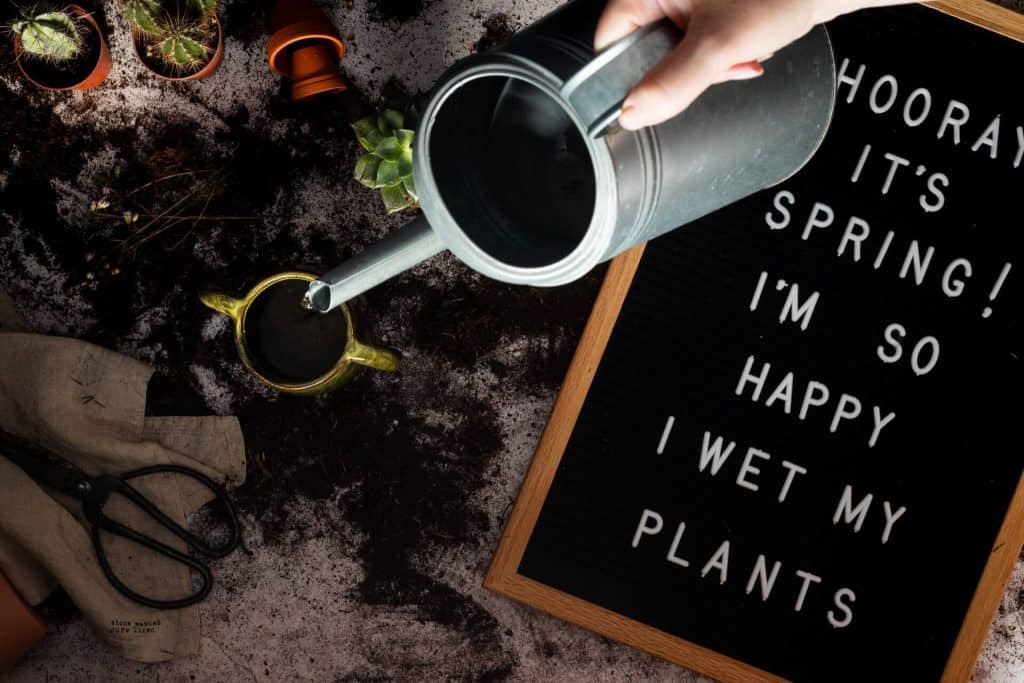
As tropical plants, Monstera Siltepecana appreciates its soil to be wet and moist especially considering its epiphytic nature. Thus, they do not require too much water to live healthily.
Using a pot with holes is a great way to let the soil drain from water and maintain its moisture level. Otherwise, soggy and wet soil will and can lead to root rot.
When should you water your Siltepecana?
Well, the best practice for your Monstera Siltepecana care is to water them when the soil is slightly dry and to never wait until the topsoil becomes completely dry. Alternatively, you can use plugin self-watering spikes!

You can measure the dampness of the soil by sticking your index finger in the pot and feeling the soil texture before you water them. Or you can use a moisture meter to measure the soil moisture.

Other important rules that you should take note of when watering your Siltepecana are:
- Water them in the morning instead of in the evening. To allow the plant to process and absorb the water during the day and rest during the night.
- Use room temperature water to water your Siltepecana. Do not use cold or hot water as this will shock the roots of your Monstera Siltepecana.
Temperature
A good temperature range for Monstera Siltepecana to grow well is between 50°F to 95°F (10°C – 35°C). However, they can still survive in a low-temperature condition, but the lifespan will greatly decrease in comparison to living in its ideal temperature range.
According to the United States Department of Agriculture Hardiness Zone, these plants belong to USDA hardiness zone 9 to 11. So, the best environment for the plants to thrive outdoors is around that zone range.
Humidity
Monstera Siltepecana will tremendously thrive in high humidity conditions due to its natural tropical traits. Even so, living in lower humidity levels is also adequate for these plants to grow.
Although it can still grow in low humidity conditions, you should improve the humidity level if your Siltepecana plant shows any sign of dryness.
Follow any of the methods below to help you increase the humidity of your plants and improve their growth:
- Place a tray filled with pebbles underneath the pot. Then, add water to the tray to provide enough moisture to your plant liking
- Mist your Siltepecana plant leaves daily.
- Use a humidifier in the room.

- Densely plant your garden to increase the humidity level.
- Put your Siltepecana plant in the bathroom, as bathrooms are often the warmest and most humid area than the rest of the house.
Fertilizer
Using standard houseplant fertilizer containing nitrogen, phosphorus, and potassium is sufficient for Siltepecana to grow strong.

And it is always advisable to dilute the fertilizer to only half of its strength before applying it to your plant. Over-fertilizing your plant may result in root damage, browning leaves, slow or no growth.
Summer or spring is the perfect time to encourage new growth for your Monstera Siltepecana. Thus, it is best to feed them once a month during this season.
On the contrary, during the colder months, these plants do not need much fertilizer.
If you are using pre-mixed soil for your plant, initially, you might not need to feed your plant. Some pre-mixed soil often contains fertilizer. The fertilizer usually can last for about 7 to 8 months before you start refeeding.
Another option for plant food you can use is slow-release fertilizer, which usually comes in small round balls with multiple colours.
Propagation
Propagation is a process to multiply the number of particular plants from various sources such as seeds, stem cutting, and other plant parts.
It is advisable to propagate your plants during the growing season (during summer or spring season) since it is the time when these plants are most active.
Avoid propagating the plants when they are dormant (during the winter season) since no growth will occur during this time.
For Monstera Siltepecana, the most convenient way to propagate them is by stem cutting.
It is crucial to ensure that the stem consists of at least one node when you cut it.
Why?
This is because a node is where the roots grow and you can still propagate a Siltepecana stem without a leaf. But not without a node.
Therefore, the best practice to propagate your Monstera Siltepecana is by cutting the stem with at least one node and one leaf.
After the stem cutting, there are four techniques you can apply to propagate the stem:
- Water Propagation
This technique is the most preferred technique as it is pretty easy, and you have the advantage of monitoring the whole propagation process.
Here are the steps on how to do water propagation:
- Clean your knife and scissors by sterilizing them before you begin cutting the stem.
- Cut the stem below a node with 1 to 3 leaves.
- Have a container prepared with room water temperature. Best if you have a transparent container so that you can monitor the propagation process.
- If you have distilled water or rainwater, then it is best to use them. If not, tap water is just fine.
- Put the stem cutting straight into the water and ensure that the nodes are below the water. Also, make sure the leaves are not submerge in the water as this will damage the plant.
- Put the plant in a warm temperate environment and wait for a few weeks for your Monstera Siltepecana to grow its roots.

- Change the water regularly to help speed up the rooting process by reintroducing more oxygen.
- Once the root is about several inches long, proceed to transfer the plant into the soil.
- And finally, let your new Monstera grow!
- Soil Propagation
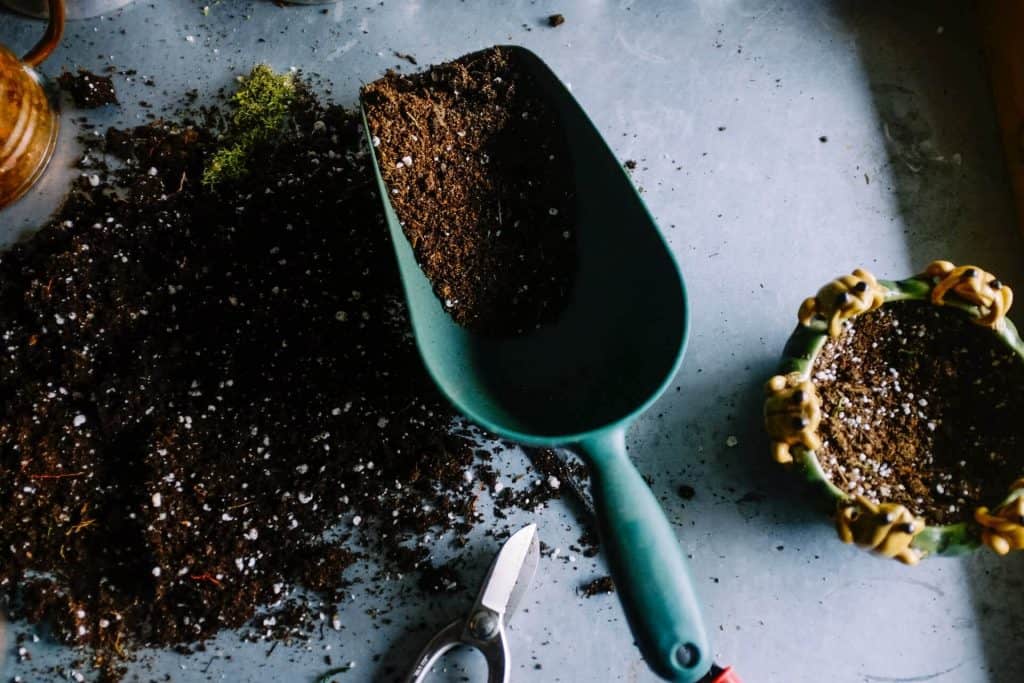
For the soil propagation technique, it is hard to know what is going on beneath the soil. So, it is pretty much impossible to monitor the whole propagation process.
Also, it is easy to get the moisture level of the soil wrong, hence increasing the chance of leading your plant’s roots to rot during the propagation process.
That is why you might find this technique quite simple to do but hard at the same time.
However, if you follow the soil propagation steps correctly, you will surely be able to clone your Siltepecana plant successfully with this technique.
- Cut the stem with at least one node and one leaf.
- Let the end cut dry for a few minutes or hours, depending on the size of the cutting, before placing it in the soil.
- While waiting for the end of the cutting to dry, prepare a well-drained and slightly moist soil for propagation.
- Before placing your cuttings into the soil, you may use some cloning gel or root hormone to boost the rooting process. However, this is optional.
- Make a hole in the soil, and then put your stem cuttings into the hole.
- Gently press the soil to secure the hole. Ensure that the node is under the soil.
- Water your Siltepecana cuttings carefully. At this stage, your plant has not yet developed its roots. If you add too much water, it may result in wet and soggy soil, hence damaging your plant.
- Wait about 2 – 3 weeks before you gently pull it out to see if the cutting has already started to root.
- You will know the propagation is successful once you notice the first leaf from the cuttings.
- Sphagnum Moss Propagation
This propagation technique has a high success rate if you do it right. That is why it is one of the preferable propagation techniques.
The great benefit of using this technique aids the plant making it less likely to get shocked when transplanted into the soil. The reason being so is this method produces soil roots that are thicker and sturdier instead of water roots that are smaller and fragile.
Thus, this shows the method has a high survival rate when moving a propagated Monstera Siltepecana into the soil.
Here is the step by step guide on sphagnum moss propagation:
- Soak your sphagnum moss into the water for a few seconds.
- Remove the water by pressing the moss with your fist multiple times to ensure that the moss is not too moist for the propagation process.
- Place the moss into a container or a box.
- Place your fresh stem cutting on top of the moss and cover the container with a plastic bag to avoid the moss getting dry.
- Mist or spray your moss every couple of days when you notice the moss is about to go dry.
- After a few weeks, check the cutting to see if the root has already started to form.
- Perlite Propagation
If you don’t want to deal with fungal, bacterial, and pest infestation, then perlite propagation is a fantastic way for you to propagate your Monstera Siltepecana.
Perlite is not an organic source, and it also has been disinfected.
So, the chance for you to deal with those little pests is most likely not going to happen.
Like water propagation, you will also be able to watch the whole propagation process using this technique.
Here is how you can apply perlite propagation to your Siltepecana:
- Prepare some perlite and place it in a container.
The Miracle-Gro Perlite is our favourite and it’s very affordable, get it if you want to save some money.
- Place the stem cutting in a container that contains perlite. If you want to observe the whole propagation process, then use a transparent container instead.
- Fill the bottom of the container with water for about half inches. Do not let it reach the base of your plant.
- Place the plant inside a plastic bag or humidity dome to maintain its humidity. If you are using a plastic bag, ensure you air the bag to keep the side of the bag from the cuttings since this will result in creating mould between the leaves and the plastic bag.
Get these affordable and reusable nursery plant pots here
- The combination of perlite and water will provide your cutting with the moisture that it needs, which helps it to propagate healthily. On that account, it is vital to refill the bottom of the container with water every time it is empty of water.
- The roots will start to form after a few weeks. Let the roots grow for several inches long before transplanting them into soils.
Potting

It is essential to use a pot that has a hole for your Monstera Siltepecana. So that the water can drain quickly through the hole after you water them. And no excess water remains at the bottom of the pot.
The downside of using a pot with a hole is that you might rinse out the soil when you water the plant.
Hence, it is best to put some rocks or net on top of the hole to prevent your soil mix from flushing out from the pot when watering.
Pruning
Monstera Siltepecana requires more pruning compared to most other houseplants due to its high growth rates.
Pruning your Monstera plant by removing dying and dead leaves helps to support the growth of new healthy leaves.
Aside from that, pruning your plants also helps to shape and groom them. Thus, makes them look neater and tidy.
Tips to prune your Siltepecana:
- Ensure your knife or cutting tools are clean and sharp before you begin your pruning. So the cut is neat without bruising the stem. Also, to avoid the plant getting infected by bacteria during the pruning process.
- Prune your plant during the growing season, which is in the summer or spring, to encourage its growth. When you prune around this time, the plant can recover quickly and enhance its growth rates.
- Always plan the pruning. The reason is that each type of cut will produce different outcomes for your Monstera Siltepecana.
For example, if you prune at the top, the plant will become taller. If you want to have more growth, you should cut where you want it to grow.
If you want to control the size, then prune the plant down to size.
- Always include nodes when pruning, as the nodes will develop roots and increase growth.
Siltepecana’s Problem And Remedy
Every plant will always have its problem, and that includes Monstera Siltepecana.
The most common problem with Monstera Siltepecana usually relates to pest and foliage discoloration.
Pest Infestation

Siltepecana plants are pretty vulnerable to pest infestation. The most common ones are:
- Spider mites
- Aphids
- Scale insect
- Mealy Bugs
- Fungus
- Bacteria
If your plant’s leaves, stems, or branches show signs as follows:
- Brown spot on the leaves
- Browning, curled, mottled, shrivelling leaves
- Yellowish or white spot on the leaves, stems or branches
- Black mould growing on leaves
It could be that your plant gets overrun with pests.
But do not worry! Because there are ways for you to treat your plants from pest infestation. Here are some of the treatments that you can apply to your Monstera Siltepecana care:
- Clean both sides of the leaves regularly with water.
- Use Castile Soap that is already diluted with water to clean both sides of the leaves, including stems.
- Use water-diluted alcohol to treat the leaves and stems. Applying alcohol is one of the effective solutions for fighting any pest infestation.
- Apply Neem oil to your plant. This oil is very effective in getting rid of bugs.
The Harris Neem Oil is one of the best options!
For the best results in treating your plant, do any of these methods in isolation for three weeks.
Root Rot
Root rot is a form of the disease and is usually due to overwatering.
If your plants show signs such as yellowing, distorted or wilting leaves, or stunt growth, this might be due to root rot.
And when you check the roots, they will be in black and mushy condition and even fall off. This problem occurs when the soil is too damp for the roots to breathe, which leads to the roots decaying.
In case you ever wonder if there is a way to treat root rot disease? Yes, there is a way to treat this disease.
To treat root rot disease, you may follow the steps below:
- Snip all the affected roots and clean them gently with room temperature water.
- Disinfect the roots by applying fungicide solutions.
- Remove and discard the old soil from the pot.
- Clean and disinfect the pot before repotting. The reason is that root rotting disease is an infectious disease. To avoid the disease affecting other roots, ensure that the Siltepecana pot is thoroughly clean.
- Alternatively, you can replant your plant with a new fresh pot.
- Prune your plants to give them a fresh start.
Yellow Leaves
There can be two reasons why your Monstera Siltepecana leaves become yellow.
- Overwatering
- Natural occurrence, where the leaves are getting old
Here is how you can fix it:
- Check the soil to ensure it is not wet and soggy before you water your Siltepecana. The best soil conditions for Siltepecana are neither too damp nor dry but slightly moist.
- Change the soil mix if you find that the soil remains dense and wet for about a week.
- Prune your plant to remove the yellowing leaves. If the problem is due to its leaves getting old, your plant should be rising healthily after pruning.
If the problem is still occurring, then your plant is probably having a root rot issue.
Browning Leaves
Browning leaves are always caused by not receiving enough light, overwatering, or accumulation of salts.
If the problem is caused by not receiving enough light, think about the location of your plants.
- Relocate your plants near the window that provides bright indirect sunlight.
- The best window direction to place your Siltepecana is the east-facing window, as it provides a vast amount of indirect sunlight to your plants.
But, if the cause is due to the accumulation of salts, you need to check your fertilizing routine.
- Ensure that you use a good quality fertilizer.
- Do not overfeed your plants. The best is to feed them once a month during growing seasons.
If you notice there are white patches around the plants, this is a sign that the salts have already built up in the soils. Hence, it is better to change to new fresh soil.
Discoloured Leaves
This issue is usually a sign that shows your plant is malnourished.
The leaves are commonly in yellow and pale colour, with veins seen clearly on the leaves.
For Monstera Siltepecana to thrive, you need to provide proper nutrients to the plants by:
- Provide enough fertilizer to your plant, especially during the growing season (spring and summer)
- Use a soil mix that contains enough macro and micronutrients for the plants.
Monstera Siltepecana Wilting
There are many factors for Monstera Siltepecana to wilt. But underwatering and overwatering are often the causes of this matter.
When you notice that your plants are starting to wilt, you should immediately check the soil moisture and treat them according to the soil condition.
- Take note of the last time you watered your Siltepecana plants and check the soil moisture by sticking your fingers into the soils.
- If the soil is entirely dry, immediately water the plants thoroughly. Also, make sure the water is flowing out from the drainage hole. After that, keep watering the plants regularly.
- Do take note not to let the soil dry wholly, as this will block the water from reaching the roots even when you keep watering them.
- If the soil remains wet and soggy for nearly a week from your last watering, then this means that either you are not using a proper soil mix or your plants are having a root rot disease.
Can You Make Monstera Variegated?

Variegation is the expression of different colour zones on the leaves, stems, and petioles of a plant. It is very uncommon to have Monstera randomly variegate.
You can make variegated Monstera by propagating variegated cuttings with conditions where the cuttings have a decent 50 / 50 share of white and green colouration.
Without meeting this condition, the chance that your propagation will produce a variegated Monstera is low.
However, as already said, variegated Monstera is quite rare. So the supply of good quality variegated cuttings is somewhat limited.
You may find on eBay, Facebook, Etsy, etc., sellers selling variegated stem cuttings. But, due to its rarity, most of them sell it at quite a higher price.
How Do You Get Fenestration In Monstera?
Fenestration is the process where plants develop natural holes in their leaves. And it is not unusual in the Monstera genus.
Like most Monstera species, Monstera Siltepecana will get fenestrate when it turns into a mature Monstera Siltepecana.
At their juvenile stage, the leaves are usually lance-shaped or heart-shaped green leaves with a beautiful silver hue.
Sometimes, there is a case where the plants do not show any fenestration, even after they have reached a mature stage.
If you notice your plant has this sort of symptom, the lack of receiving enough light is often the cause why Monstera did not fenestrate.
To have your Monstera Siltepecana grow big and healthy with gorgeous fenestration, ensure that you provide enough light, water, and humidity in your Siltepecana care.
Your plant won’t be able to grow well if any of those needs are not met.
How To Make Monstera Siltepecana Grow Faster?
Here are six ways you can encourage fast growth in your Monstera Siltepecana:
- Give your Monstera Siltepecana more light.
- Water your Monstera properly without overwatering them.
- Fertilize your Siltepecana correctly, especially during spring and summer.
- Keep your Monstera plants clean.
- Increase the humidity of the environment around your Monstera Siltepecana.
- Repot your Siltepecana plants when they have overgrown their pot.
How Long Does The Monstera Siltepecana Plant Live?
There is no specific length on how long your Monstera can live. It all depends on the right environment and how you take care of the plant.
Most Monstera will start to mature when they are about the age of 3 years old. Given the right conditions and care, some Monstera plants have lived around 30 to 45 years.
Is Monstera Siltepecana Rare?
Yes, Monstera Siltepecana is a very rare vining plant. It is the rarest variety in the Monstera genus.
What is so rare about Siltepecana is the unique colour of its leaves. The leaves are greyish-green with dark green veins that look like a vibrant silverish pattern.
Tips For Healthy Siltepecana Plant
- Use a well-draining soil mix for your Monstera Siltepecana.
- Use a pot that has a decent drainage hole.
- Provide support such as a moss pole so that your Monstera Siltepecana can climb and grow higher.
- Provide sufficient indirect sunlight to your plants.
- Keep the humidity around your Siltepecana plants high.
- Water your plants accordingly. The best is to water them once a week.
- Feed your plant with fertilizer and dilute it with water to half of its strength. Using a high concentrated fertilizer will harm your plants.
- Clean your Siltepecana plants regularly to ensure it’s clean from pest infestation.
- Never overwater your plant as it will damage the plant’s roots.
- Propagate and prune your plant to encourage its growth
Final Thought?
Monstera Siltepecana is a unique, gorgeous, and easy-to-grow evergreen vine from the Monstera genus.
A remarkable plant for your home as it is a very versatile houseplant.
Whether in a terrarium, hanging basket, or climbing support, Monstera Siltepecana can live healthily as long as the basic needs are provided.







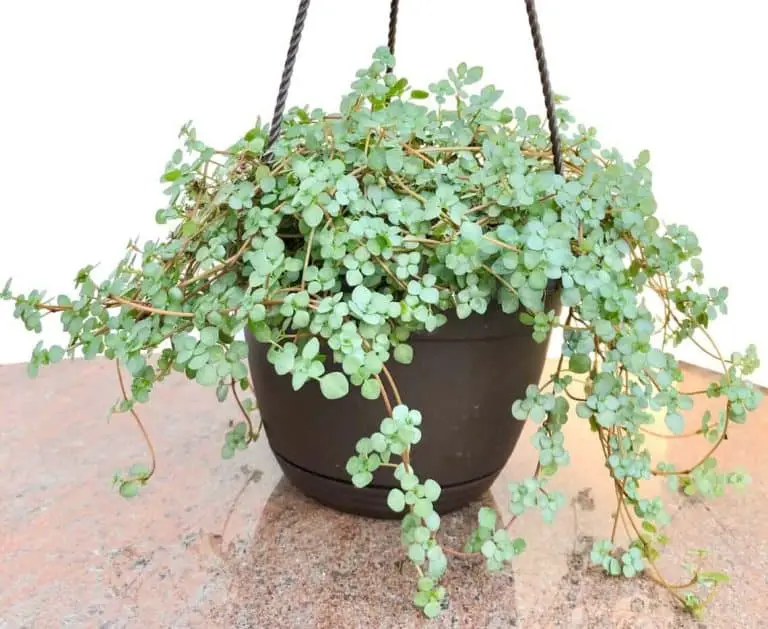

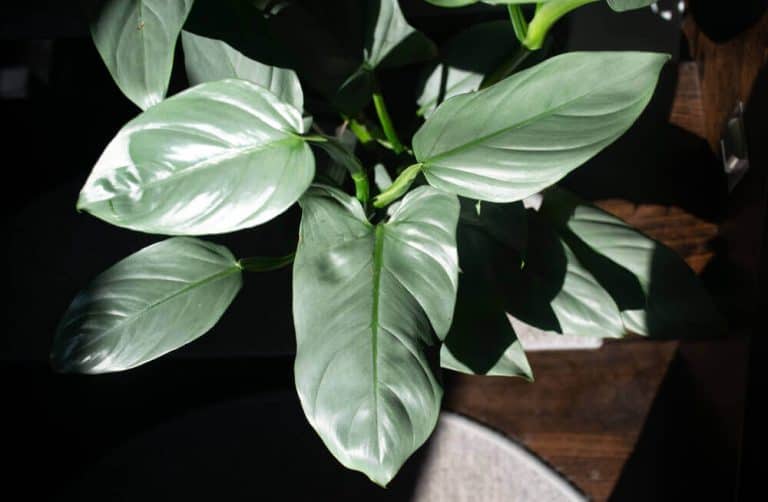
![How To Grow Tomatoes Indoors With Lights + Growing Tips! [2023]](https://aboveandbeyondgardening.com/wp-content/uploads/2022/08/how-to-grow-tomatoes-indoors-with-lights-768x512.jpg)
